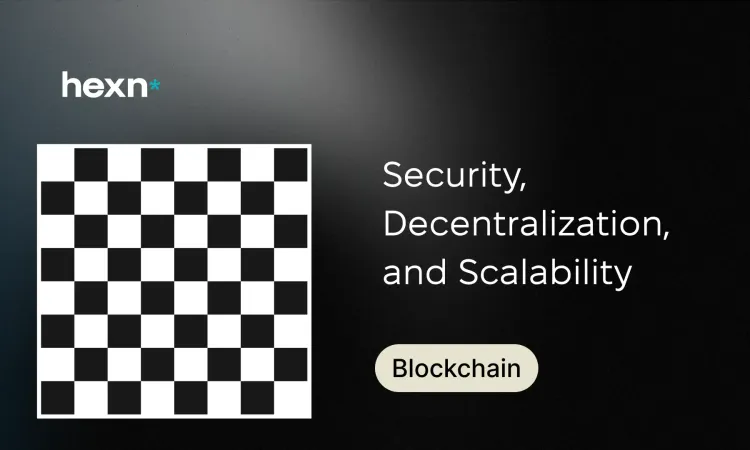Balancing Security, Decentralization, and Scalability in Blockchains
What Is the Blockchain Trilemma?
The blockchain trilemma describes a persistent engineering challenge: designing a distributed ledger that is simultaneously secure, decentralized, and able to process many transactions quickly. This tension matters because real-world applications — payments, decentralized finance, gaming, identity — need throughput and low cost, but also must remain resilient to attacks and free from central control.
How Decentralization Protects Networks
Decentralization means control and verification are shared among many independent participants rather than concentrated in a single entity. That distribution makes systems more censorship-resistant and transparent: any participant can verify the ledger and disagree with malicious attempts to rewrite history. However, decentralized validation requires multiple parties to agree on each change, which adds latency and limits the number of transactions the network can finalize per second.
What Strong Security Costs
Security in a distributed ledger is delivered through cryptographic safeguards and consensus rules that make tampering expensive or infeasible. High security prevents double-spending, history-rewriting, and other attacks. Achieving that protection often involves resource-intensive processes or many independent validators, both of which can reduce transaction throughput or increase operational overhead.
Higher Throughput and Lower Fees
Scalability refers to how many transactions a network can process per second and how cost-effective those transactions are. Centralized systems can reach very high transaction rates because they coordinate internally, but they sacrifice the transparency and fault tolerance offered by decentralized designs. Public distributed ledgers, by contrast, trade some speed for trustlessness, which creates the core trade-off of the trilemma.
Why Improving One Property Affects the Others
Because these three goals interact, boosting one often reduces the effectiveness of another. For example, increasing block size or reducing the number of validators can raise throughput but concentrate control or create single points of failure. Enhancing cryptographic guarantees may require heavier computation, which slows confirmation times. The practical question designers face is how to move the system toward a better balance rather than trying to maximize a single dimension.
Technical Approaches to Ease the Trilemma
Researchers and developers have pursued several techniques to strike better trade-offs. No single approach is a perfect fix, but many combine to create practical improvements.
Sharding: splitting work across parallel lanes
Sharding partitions a blockchain into smaller units called shards, each processing a subset of transactions and storing part of the state. A coordinating layer reconciles cross-shard activity. By enabling parallel processing, sharding raises throughput without forcing every node to handle the entire network load, though it introduces new complexity in ensuring cross-shard security and consistency.
Alternative and hybrid consensus models
Moving away from energy-heavy or resource-intensive validation can help. Consensus methods that rely on staking, selected committees, or identity-based validators reduce resource use and make it easier to add validators, which can boost performance. Hybrid models mix techniques to retain stronger security while improving speed, but they often require careful incentive and governance design to avoid centralization risks.
Layer 2 systems and state channels
Layer 2 solutions handle many transactions off the main chain and periodically settle results on the base layer. Examples include rollups that batch and compress transactions into concise proofs, and state channels that keep most interaction off-chain with only final states recorded on the main ledger. These approaches reduce congestion and fees while inheriting the base layer’s security for final settlement.
Modular and application-specific architectures
Instead of a single monolithic chain trying to do everything, modular designs break responsibilities into execution, settlement, and consensus layers. Application-specific chains (or app-centric layers) tailor performance and rules to a particular use case, improving efficiency while relying on shared settlement for security. These models aim to achieve higher throughput without handing control to a small set of operators.
Practical Trade-Offs to Consider
- Use case matters: High-value settlement and custody benefit from stronger security and broader decentralization; high-frequency applications prioritize throughput.
- Hybrid strategies are common: Many projects combine base-layer security with off-chain scaling or sharding to reach acceptable compromises.
- Monitoring for centralization: Faster systems can become centralized over time if validator access, governance, or economics favor a few actors.
Where Progress Is Headed
There isn’t a single breakthrough that fully eliminates the trilemma, but steady innovation is narrowing the gap. Expect to see continued integration of layered scaling solutions, more sophisticated sharding schemes, and modular architectures that distribute responsibilities more efficiently. Over time, these advances aim to make distributed ledgers capable of supporting large-scale, real-world applications without sacrificing the protections that make them valuable in the first place.
Short Summary
- The trade-off between security, decentralization, and scalability is fundamental to blockchain design.
- Enhancing one property typically requires compromises in another.
- Techniques such as sharding, alternative consensus models, Layer 2 solutions, and modular designs help rebalance those trade-offs.
- While no universal solution exists yet, combined approaches are making meaningful progress toward wider adoption.
